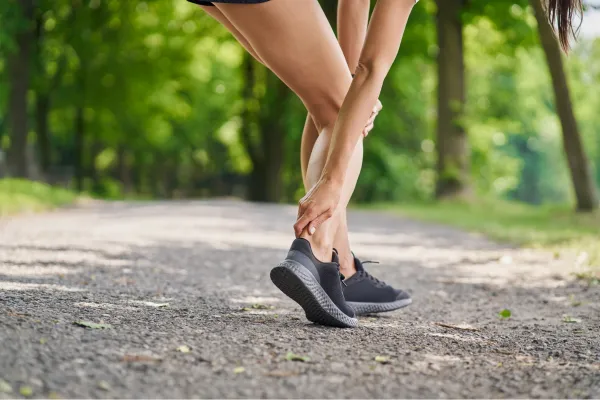
The Anatomy of the Achilles Tendon: Why It’s Prone to Injury
The Achilles tendon, though often taken for granted, plays a crucial role in our daily movements. Understanding its anatomy and why it's susceptible to injury can help us better manage and prevent conditions like tendinopathy. Let’s dive into the structure of this vital tendon and explore why it’s so prone to problems.
What is the Achilles Tendon?
The Achilles tendon is the largest and strongest tendon in the human body. It connects the calf muscles—the gastrocnemius and soleus—to the heel bone (calcaneus). This tendon is essential for many movements, including walking, running, and jumping, as it enables the foot to push off the ground and absorb shock.
Anatomy of the Achilles Tendon
Calf Muscles: The Achilles tendon begins at the two primary calf muscles. The gastrocnemius muscle has two heads that run from the back of the knee to the heel, while the soleus extends from below the knee to the heel. Together, these muscles form the bulk of the calf and contribute to the tendon’s strength.
Tendon Structure: The Achilles tendon itself is composed of dense, fibrous connective tissue arranged in a parallel fiber pattern. This structure provides the tendon with its remarkable strength and elasticity, enabling it to withstand the forces generated during activities like running and jumping.
Insertion Point: The tendon attaches to the back of the heel bone. This connection is crucial as it allows the force generated by the calf muscles to be transmitted to the foot, facilitating movement.
Why Is the Achilles Tendon Prone to Injury?
Despite its strength, the Achilles tendon is particularly susceptible to injury for several reasons:
High Mechanical Stress: The Achilles tendon endures substantial mechanical stress, especially during high-impact activities such as running and jumping. Repeated stress can lead to microtears in the tendon fibers, causing tendinopathy.
Limited Blood Supply: The Achilles tendon has a relatively poor blood supply, particularly in the middle portion. This limited blood flow can slow down the healing process when the tendon is injured or inflamed.
Degeneration with Age: As we age, the tendon's collagen fibers can become less organized and more prone to degeneration. This age-related change can increase the risk of tendinopathy, even with normal activity levels.
Biochemical Changes: The tendon’s biochemical environment can affect its susceptibility to injury. For instance, inflammatory processes or metabolic changes can impact tendon health and increase the risk of tendinopathy.
Footwear and Biomechanics: Improper footwear, flat feet, or other biomechanical issues can place additional strain on the Achilles tendon. Poor alignment or lack of support can exacerbate stress and lead to injury over time.
Sudden Increases in Activity: Rapid changes in activity levels or intensity can overload the Achilles tendon. For example, suddenly increasing the distance or speed of running can strain the tendon beyond its capacity to adapt.
Preventing Achilles Tendon Injuries
Understanding the Achilles tendon’s anatomy and its vulnerabilities can help in prevention. Here are some tips to reduce the risk of injury:
Gradual Progression: Increase activity levels gradually to allow the tendon to adapt and strengthen over time.
Proper Footwear: Choose shoes that offer good support and cushioning, especially for high-impact activities.
Stretching and Strengthening: Regular stretching and strengthening exercises for the calf muscles and Achilles tendon can enhance flexibility and reduce the risk of injury.
Listen to Your Body: Pay attention to any signs of discomfort or pain, and allow adequate rest and recovery.
By learning about the Achilles tendon’s structure and the factors that contribute to its vulnerability, you can take proactive steps to protect it. If you’re experiencing persistent pain or suspect an Achilles tendon injury, don’t hesitate to contact us at Coventry Foot Doctor. Our team is here to provide expert care and help you stay active and pain-free!
Ask Abid And His Team
Fill in the form to request a Call From Our Team
One of our team will call you for FREE and answer any questions or concerns you may have about your uncomfortable Foot Pain
© Copyright 2022. Biomechanix Clinic Ltd. All rights reserved.





